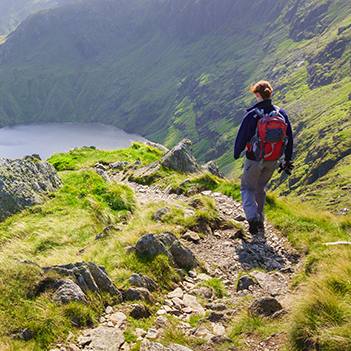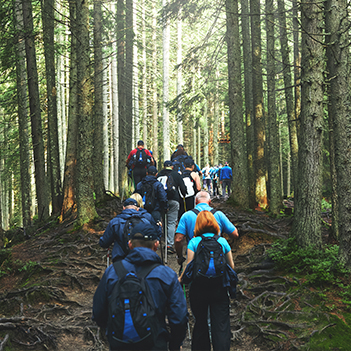Section 12 - Moscar to Worrall
Section 12 of The Trans-Pennine 100 leave the barn and follows The Sheffield Country Walk towards Worrall, passing Boots Folly.
High above the Strines and Damflask rezzies the route enters Low Bradfield then High Bradfield.
Along another few fields see the route enter Worrall to find the checkpoint at the Village Hall.
- The Sheffield Country Walk is a 54.5 miles (87 km) walk route that start and finishes from Eckington, on the outskirts of Sheffield, South Yorkshire.
-
This challenging and varied route around the outskirts of the city passes many sites and buildings of archaeological, historical and industrial interest. It follows woodland and riverside paths, crossing undulating farmland and the open gritstone moorlands to the west of the city. It passes through via Eckington, Burbage, Grensoside and Meadowhall, in ten sections of around 8km/5 miles each, linked by public transport.
-
-
High on the south flanks of the Strines reservoir at a height of 315 metres (1,033 ft), stands Boot's Folly, also known occasionally as Strines Tower or Sugworth Tower. This is a folly constructed in 1927 by Charles Boot who resided at nearby Sugworth Hall. The 45-foot-high (14 m) square tower with castellated top and flagpole was built from leftover stone when the nearby Bents House was constructed. The stone for Bents House had come from the disused Bents Farm, Pears House Farm and Nether Holes Farm, which had been demolished because they were suspected of polluting the waters in the dale. It is thought that Boot's Folly was constructed to provide work for Sugworth Hall's workmen during The Depression. There is also a theory, however, that Boot built the tower so he could see High Bradfield churchyard where his wife, who had died in 1926, aged 56, was buried. Today the interior is bare but it originally had wood panelling and a large furnished room at the top where the Boot family could enjoy the view. There was a spiral staircase to the top, but this was removed some years ago after a cow climbed the stairs and became stuck. The Folly gives fine views of the reservoir and Bradfield Dale.
-
Damflask reservoir was built as one of a group of reservoirs in the Bradfield area (the others being Strines, Agden and Dale Dike reservoirs) to supply both fresh drinking water and a guaranteed supply of running water to the population and industries respectively of Sheffield. It was completed in 1896 with the dam walls being constructed from local stone, and its original purpose was primarily as a compensation reservoir to ensure a continuous flow of water to the River Loxley downstream. It takes its name from Damflask village which was washed away in the Great Sheffield flood of 11 March 1864; the village stood near the site of the current dam wall and had a public house (Barrell Inn), corn mill, paper mill, wire mill, blacksmith's shop and a few dwellings. The village was never rebuilt after the flood because plans were already in hand to construct Damflask Reservoir.
- Low Bradfield was the first populated place to be flooded by the Great Sheffield Flood when the Dale Dyke Dam broke on 11 March 1864. The original dam wall stood almost one mile west of the village. There was only one fatality in the village mainly because word had spread throughout the immediate area that there was a leak in the earth embankment and the community was partly prepared for the tragedy. The only death was a one-day-old infant, the child of a local couple (Mr. and Mrs. Dawson); despite this the village was extensively damaged. Two stone bridges were swept away, as was the corn mill, blacksmith’s shop, schoolroom, schoolmaster's house and a farmhouse.


















